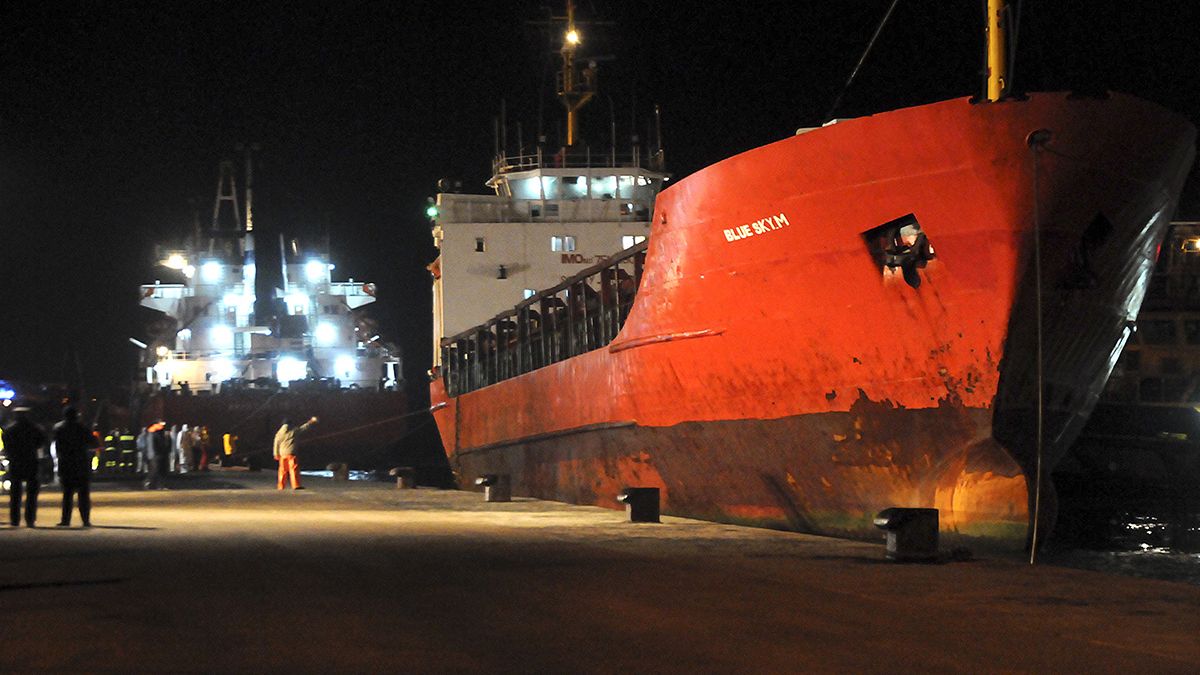Finally safe on dry land in Gallipoli, Italy… The vessel Blue Sky M had its steering locked on a collision course for the Italian Adriatic shore
Finally safe on dry land in Gallipoli, Italy…
The vessel Blue Sky M had its steering locked on a collision course for the Italian Adriatic shore carrying some 800 powerless migrants.
Its smuggler crew had jumped ship in the final hours of 2014 and got away on small boats.
They abandoned the freighter’s human cargo — mostly Syrians — adrift for days without food, water or warmth.
The UN refugee agency says it has seen hulks ready for the scrap heap used more and more over the past two months — even without electronic equipment.
Their hundreds of passengers each pay thousands of euros.
More than 3,000 of these migrants died trying to reach Europe in 2014. It’s estimated that here have been some 23,000 deaths spread over 15 years.
In a sinking off the island of Lampedusa, half-way between Sicily and the North African coast, in October 2013, 366 migrants drowned.
Italy said it was ‘intolerable for the Mediterranean to be a sea of death’.
The Italian government launched the rescue operation Mare Nostrum, mostly paid for by cash-strapped Rome.
In the space of one year, 150,000 people were saved, but Italy found it couldn’t afford the 114 million euro cost.
The Mare Nostrum mission was retired, Triton was created.
This common effort pools ships, aircraft and personnel from various EU member states, on a budget limited to three million euros per month.
Triton does not replace Italian responsibility for guaranteeing full respect of EU and international maritime search and rescue obligations, coordinated with the bloc’s border control agency Frontex.
According to the interior ministry in Rome, last year saw — on average — more than 400 unregulated, mostly seaborne migrants end up in Italy per day.
Some EU partners are reluctant to commit more search and rescue resources, arguing that to do so would further encourage trafficking.
